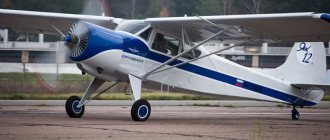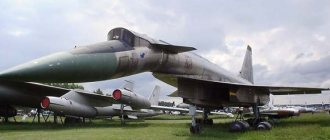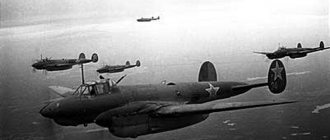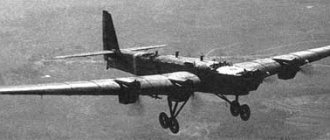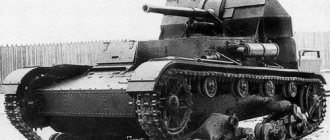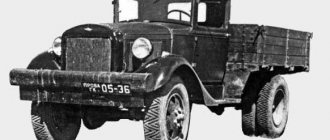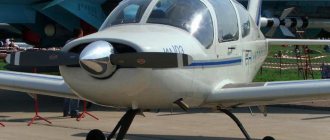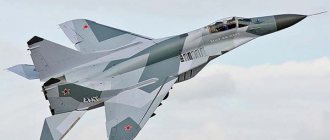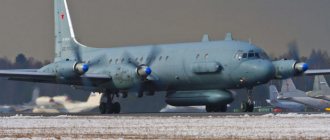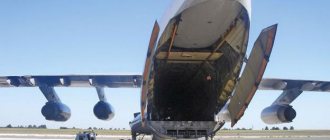Il-112 is a Russian advanced light transport aircraft, which is being developed by AK im. Ilyushin. This machine was initially considered as a replacement for the morally and physically outdated An-26 transport aircraft.
Il-112 is one of the most “long-lasting” projects of the domestic aviation industry; its development began in the first half of the 90s, but currently preparations are only underway for flight testing of the machine. Production of the Il-112 is planned to be launched at the facilities of the Voronezh Aviation Plant (VASO).
If we talk about the latest news related to the IL-112, they are not particularly encouraging. At the end of January 2022, another postponement of the aircraft’s first flight was announced. Now this event is scheduled for the second half of this year. But there have already been so many delays and delays in the fate of this project that you simply refuse to believe in its successful implementation...
It is planned that the aircraft will be produced in two modifications: civil (IL-112T) and military (IL-112V). However, at present there is no talk of producing the aircraft for commercial use: for the first few years, only machines for the needs of the military department will be produced.
Back in the early 90s, studies were carried out regarding the need for a light transport aircraft. Already at that time, Russia needed approximately 300 such aircraft, and the former Soviet republics needed about 1 thousand aircraft.
Design plans
In the nineties of the last century, experts monitored the aviation market, according to which it was revealed that to update the aircraft cargo fleet with the help of the Il-112 aircraft, a minimum of three hundred aircraft would be needed, and a maximum of thousands. Why such a rift? The thing is that this aircraft has one big advantage over the same An-26 - it can be landed on unpaved and short, as well as poorly equipped runways.
Another huge advantage of the IL-112 is its use without major repairs. That is, it is enough for the technical staff to monitor the level of suitability of the vessel. According to the designers' forecasts, the service life of the Il-112 aircraft was supposed to be thirty-five years.
Flight characteristics
The speed of the new aircraft will be approximately the same as that of the An-24 or An-26 - from 480 (cruising) to 550 km/h. The ceiling is 7600 m, the range is up to 1000 km, but takeoff and landing characteristics will be significantly improved. To take off, Ilu will need a runway length of 870 m, and to land - 600 m. The avionics have undergone serious changes. It is assumed that the devices will be the most modern. The cargo compartment is spacious, its capacity exceeds the size of cargo that the An-140 can carry.
History of creation
The development of the project began in the early nineties of the last century. According to the original plan and the described technical characteristics of the Il-112 aircraft, the aircraft was to be produced for passenger transportation. The main finances came from, and, according to agreements, production was supposed to begin in 1994, but this did not happen. Then serial production of the Il-112 was given to the Voronezh Joint-Stock Aircraft Manufacturing Company.
The Ministry of Defense of the Russian Federation received development of the project only in 2004. Then the assembly of the first new Il-112 was scheduled for 2006, but these plans also failed. The implementation of the drawings was delayed, and in the end the situation led to the transfer of the project for further financing to the Ilyushin design bureau, and the device itself was included in the list of state defense orders until 2015.
Prospects
It is difficult to talk about the accuracy of the forecasts; the development was plagued by failures for a quarter of a century.
They will be tested, one for flight, the other for life, and will prove their high strength. In another year, production will become serial and by 2022 the customer (the Ministry of Defense) will receive 62 copies as part of the ongoing state program. V. Putin is interested in the pace of work, which creates an additional incentive for the whole team.
As for the plans for 200-300 aircraft, they are quite realistic. AN-12 and An-26 should be decommissioned within 6-8 years. Their place can only be taken by the more advanced IL-112, which will perform their functions more comfortably, technologically and economically.
No other orders have been received yet. However, the model is considered universal; the possibilities of creating reconnaissance aircraft and air command posts on its basis and using them for electronic warfare are being considered. So the model has a chance to be developed in the form of modifications and leave a pleasant mark on itself in aircraft construction.
Further release attempts
But an unfortunate series of events did not abandon the Il-112 aircraft, and already in 2010, the Ministry of Defense of the Russian Federation stopped providing monetary funding, although by that time four sides had been partially assembled, and 800 million rubles were missing for the aircraft to be fully functional.
As a result, the Voronezh Aviation Aircraft Society prepared two flying models, and two remained unfinished. According to the manufacturer's plans, the annual production was supposed to be eighteen cars, but another problem immediately appeared. The Ministry of Defense abandoned the first Il-112 in the transport version in 2011 and supported the production of the An-140. Because of this, all further development of the transport aircraft ceased.
At the beginning of 2014, the Ilyushin Design Bureau again signed a contract with the Ministry of Defense, according to which further development of the Il-112 was to resume, since technical problems began in servicing the Antonovs due to the Ukrainian political crisis. Serial production of Ilyushin was planned for 2022.
Composites, layout and forcing
The BBC Russian Service contacted the S.V. Aviation Complex for comments. Ilyushina, awaiting an answer.
The weight of the structure will be reduced by changing the layout and introducing composite materials, Ilyushin chief designer Nikolai Talikov said in an interview with the Argumenty Nedeli newspaper. The “skeleton” of the aircraft, which ensures the strength of the structure, will not be made lighter.
Talikov spoke about problems with the weight of the aircraft back in November 2018. He then said that engineers are working to reduce weight.
The problem of the IL-112V being overweight arose due to a shortage of designers - many specialists left the enterprise due to low salaries, explained the chief designer.
Image caption
Despite all its shortcomings, the An-140 was already produced at the Aviakor plant in Samara.
The problem of overweight is traditional for all new aircraft; over many years, aircraft manufacturers have learned to cope with it, says Panteleev. In “Ilyushin”, in his opinion, they will be able to “win back” some amount of weight.
In addition, the payload can be increased by boosting the engines. Another part of the “overweight” will have to be compensated by reducing the fuel supply and reducing the flight range.
As for composite materials, Panteleev believes that their use in military aviation cannot be as widespread as in civil aviation.
“Composite materials will never be used in the power structure of a military transport aircraft’s airframe,” the expert is confident. – Relatively speaking, the wing caisson, which on civilian equipment is made of composite, will definitely not be composite. As for various kinds of hatches, fairings, and so on, the possibilities and potential for lightening due to composites are very large.”
There are also problems with the TV7-117ST engines that are installed on the Il-112V that need to be solved, notes Roman Gusarov, editor-in-chief of the aviation portal Avia.ru. In his opinion, it is also possible to cope with them.
“The TV7-117ST engine is an aircraft version of a helicopter engine. The engine on the stand works flawlessly, but a certain aerodynamic effect occurs on the wing, which in certain modes interferes with the engine’s operation,” he told the BBC.
Design Features
According to the aircraft diagram, the Il-112 is a monoplane with a high wing in the shape of a straight line. The cockpit is designed for two flight crew members. According to the characteristics of the aircraft, the Il-112, as a civilian vessel, was supposed to accommodate forty-four passengers, and as a cargo vessel, it was supposed to be able to lift up to six tons of cargo at a time.
Available data indicates that the take-off lift weight will not exceed twenty and a half tons, and the maximum number of liters of aviation kerosene that the aircraft's fuel tanks can hold is 7,900 liters.
On the wing there are:
- double-slit flaps;
- a deflector that is well fixed;
- brake flaps;
- ailerons and spoilers.
The flaps can be deflected to a maximum allowable angle of forty degrees. Ailerons with a 30 percent span are located at the ends of the wing consoles and can be deflected 25 degrees up and 17 degrees down. The brake flaps are located above the flaps, in fact, like the spoilers, which have one section.
The wing brake flaps are deflected by forty degrees. The need to use spoilers arises in the event of a failure of one of the engines during takeoff or go-around. In such situations, the vehicle roll is automatically counteracted. On the ground, they are used to reduce mileage after landing. The spoilers can deflect by twenty degrees in aileron mode and during braking - up to forty degrees.
CASA C-295
The Spanish C-295 is a completely different matter. With dimensions similar to the Il, it takes on board 48 foremen, and soldiers without equipment, according to the manufacturer, as many as 75 people. Record holder in its class.
The C-295 has an interesting ability to fly with an open ramp for greater hold capacity.
Open sources indicate the payload of the “Spaniard” is 9.25 tons. If you consider that you need to take 2.3–2.8 tons of fuel for the flight, you get a carrying capacity of 6.5 tons or so. With this weight, the plane covers 1,350 kilometers, and the cruising speed is 450–500 kilometers per hour.
At the same time, it is quite unpretentious, using runways class CBR-2 (very low strength) and worse. It’s difficult to say how much better Il is in this regard, but for takeoff and landing the “Spaniard” asks for a shorter runway - 670 and 340 meters, respectively.
The protection systems installed on the C-295 are inferior to the L-370 Vitebsk - they seem to include only passive jamming and an radiation detection station.
The enemy is worthy - with similar flight and speed indicators, good capacity and large carrying capacity.
Power point
The Il-112's power plant specifications include two turboprop engines designated TV7-117ST. In addition, the power plant refers to a special propeller with six single-row blades, designated as AB-112.
The power of each Il-112 engine is determined to be 2800 horsepower, and the thrust of the auxiliary propeller unit is 3645 kilohertz. If afterburner occurs during flight, the thrust of the additional power plant can reach a value of 4145 kilohertz.
Speed capabilities
According to the described characteristics, the Il-112 consumes up to 500 kilograms of kerosene in one hour at an average cruising speed of 480 kilometers per hour. The maximum speed that an aircraft can reach is 550 kilometers per hour with a maximum flight duration of one thousand kilometers. The wingspan is 23 meters 43 centimeters, the height of the machine is 7 meters 90 centimeters, the length of the aircraft from nose to tail is 20 meters 65 centimeters.
However, if the aircraft is ferryed, additional fuel tanks are installed on board, and then the range increases to 5,200 kilometers. The maximum altitude that the aircraft can occupy is 7600 meters. To take off, the Il-112 requires only 870 meters of runway, and for landing, six hundred is enough, taking into account braking and a complete stop of the aircraft.
Alenia C-27 Spartan
The Italians decided to make the plane larger - their “Spartan” is one and a half meters taller than the Il-112V and with an equally large wingspan.
The maximum take-off weight is almost ten tons more than that of the Il. The C-27 is a fairly large aircraft for its class. To lift it into the air and accelerate it to a cruising speed of 550–600 kilometers per hour, Rolls-Royce AE2100-D2A engines with a power of 4637 horsepower are used. The payload of the aircraft, as stated by the manufacturer, is 11.5 tons. At the same time, he swears that he is able to deliver 10 tons over a distance of 1850 kilometers. I would see how he would do this with 1.5 tons of fuel and taking into account the fact that after landing there should be another 10-15 percent left in the tanks (air navigation reserve). After all, then it will turn out that its 4600-horsepower engines, driving a car weighing 30 tons at a record speed for the class, burn only 531 liters of fuel per hour.
Western technologies, of course, can be impressive, but the AE2100-D2A is inferior to the Russian TV7-117ST in efficiency (5.3 hp per 1 g of weight versus at least 6.2 hp per 1 g of weight) and in efficiency.
Or the “Spartan” hides a couple more tons of fuel somewhere and its payload reaches 13.5 tons, which, by the way, follows from the difference in the maximum take-off weight and the empty plane. Or its actual carrying capacity is about eight tons, which in turn corresponds to the total weight of loaded weapons and equipment.
Two things can be said for sure. Firstly, data from open sources about the payloads of the Spartan should not be trusted. Secondly, in any case, it seriously surpasses the Il-112V in terms of carrying capacity.
The C-27 is well prepared for takeoff from unpaved airfields; it needs only 580 meters to take off and 340 to land, but it’s not a fact that it’s loaded. In general, the 30-ton mass should not have the best effect on the unpretentiousness of the aircraft, but it is difficult to say how much the Spartan is inferior to the Il in this regard.
The Italian's defense system includes passive and active defenses. That is, like with our L-370 “Vitebsk”.
State order from the Ministry of Defense
In 2012, the Main Command of the Air Force of the Russian Federation, in its report, reflected all the positive aspects of resuming designs for a light military transport aircraft and handed it over to Sergei Shoigu, the current Minister of Defense of the Russian Federation.
The created Il-112 project greatly impressed the leaders of the Armed Forces of the Russian Federation, so much so that, after consulting, they decided to renew the order for the development of a military model of this aircraft. Workers at Ilyushin’s design bureau instantly latched on to this idea. It is known that the model being developed for the Armed Forces is codenamed Il-112V - this completely determines its military-technical characteristics.
From Antonov to Ilyushin
In the USSR, the development of transport aircraft was traditionally carried out by the OK Design Bureau. Antonov, located in the capital of the Ukrainian SSR Kyiv. Oleg Konstantinovich was transferred to the capital of Soviet Ukraine in 1946 from Novosibirsk, where he headed a branch of the Yakovlev Design Bureau. Here Antonov created many wonderful aircraft, most of which still fly the skies over the CIS countries and far beyond their borders. These cars are reliable, beautiful and “friendly” to pilots; they “forgive” some control errors.
After the collapse of the USSR, Design Bureau named after. OK. Antonov became Ukrainian, and solving the problems of the Russian armed forces in the field of transport aviation became more and more difficult from year to year. In addition to political contradictions, many technical shortcomings also hinder the work. Be that as it may, the leadership of the Russian Federation set the task: to build aircraft independently, without relying on foreign suppliers and developers. Part of this strategy should be the Il-112, whose characteristics (in particular, its six-ton payload) will make it possible to successfully replace the vast fleet of An-26, An-24T, An-32 and other vehicles that have been serving in our army for several decades.
Difference between models
In turn, the civilian model was given the letter “T”. The design features of each model will differ in the structure of the on-board equipment, but the remaining systems are planned to be created the same. Moreover, such an aircraft model has excellent data for the development of other modifications, for example, using the example of a military vehicle, it is possible to create reconnaissance models or machines for combating radiation, as well as aircraft for scientific research.
According to some reports, Russian Post plans to purchase a transport model for its needs, but the details of the agreement are unknown. The development of the Il-112 is one of the longest programs in the domestic aviation industry.
Review
The model is a monoplane - a design with one pair of wings. In this case they are located quite high. Three landing gear legs are located under the body (fuselage). The plane needs 2 pilots. When transporting passengers, it is able to transport 44 people, cargo - 6 tons. A hatch in the tail section is used for loading. The military expects to be able to transport light equipment, weapons and personnel.
In addition to automatic landing at airfields of the second and higher categories, manual landing is provided at points without proper radio technical support. Landing is possible even on highways or unpaved strips if necessary.
The model is superior to its analogues in terms of flight capabilities in difficult climatic conditions, maximum distance and speed. All parts, including powerful modern engines, are developed and produced at Russian enterprises. At the same time, the pilots' workplaces are ergonomic and comfortable. The controls are optimally located, and there are liquid crystal displays in the cockpit.
First flight
Considering the latest news related to the Il-112, the first flight was supposed to take place in January 2022, but there were further delays. Plus, there is no longer any talk about commercial release; accordingly, only two models are expected - civilian and military.
Initially, the deadline for the first flight was set for 2017, and plans for serial production for 2019, and, according to the Ministry of Defense, the number of annual aircraft purchases has decreased from eighteen to unknown.
According to some sources, the delays were due to the provision of poorly executed project documentation - the drawings were literally crammed with errors. Although aircraft builders dared to announce three hundred aircraft planned for production.
How good is he?
The IL-112 is not an ideal aircraft, but we can confidently say that it is quite good. Provided that the engines are replaced with domestic VK-3500, with some modifications to the design, it may well perform the tasks of transport aviation, and even has a certain export potential. Representatives of the Indian armed forces became interested in the new type of vehicle several years ago, and its good reputation will prompt other promising customers to take a closer look at it. In addition, it is also important that today our Ministry of Defense no longer flatters itself with hopes of fruitful cooperation with Western partners, having focused its attention on domestic technology. We don’t have anything more modern today, and time is running out.
Military aircraft Il-112
The model, ordered by the Ministry of Defense, is ideal for landing not only personnel, but also military equipment. In this part, the Il-112V is far superior in performance to the Ukrainian Antonov 140 model (with which there is a long-term contract for the supply of aircraft), since the latter does not have a specialized ramp, which is an auxiliary means for transporting military equipment and large cargo .
Plus, the Russian aircraft has a huge advantage - it is capable of flying in any climate change and in different weather conditions, both during the day and at night. It can be used for landing at poorly prepared airfields with weak radio systems.
In order to reduce vibration levels and create some noise insulation in the cargo compartment, the part where the screws are located is sealed. Both sides of the side are equipped with fairings that cover the units to which the supports for the landing gear are attached. There, in the fairings, the auxiliary power unit and blocks of other aircraft systems were hidden.
PRINTED PARTS AND MONO WING
The IL-112V was designed using advanced digital technologies and is equipped with the most modern on-board systems of entirely domestic production. Modern requirements for the aircraft industry require the transfer of design documentation in electronic form, but at the time of the defense of the technical design of the aircraft in 2015, the “transition to digital” at OJSC Il had not yet been completed - therefore, part of the documentation had to be transferred to the manufacturing plant in the form of paper drawings. By the start of mass production of the IL-112V, all design documentation will be digitized.
When creating the aircraft, modern additive technologies were also used - for example, for the first flight model of the Il-122V, a model of an air intake of a complex design was printed on a 3D printer - such techniques speed up the process of creating the aircraft and modifying a number of components.
– said First Deputy General Director of the Aviation Complex named after S.V. Ilyushin Pavel Cherenkov.
The power plant for the Il-112V was developed and produced at JSC UEC-Klimov - this is the latest version of the TV7-117ST turboprop engines. The United Engine Corporation emphasizes that the engines operated normally during the first flight of the new aircraft for the BTA. The power of the TV7-117ST at maximum take-off mode is 3100 hp, in increased emergency mode - 3600 hp. As part of the power plant, the TV7-117ST engine works in conjunction with the AB-112 propeller (developed by PJSC NPP Aerosila), having great performance and allowing for increased frontal thrust.
– noted in the UEC. The engines are modular and fuel efficient – one of the best in their class.
TV7-117ST engine on a test bench
The onboard defense system for the Il-112V will protect the Il-112V from surface-to-air and air-to-air missiles. Having protection from all types of air defense systems and man-portable anti-aircraft missile systems, the aircraft will be able to operate close to the line of contact with the enemy and participate in counter-terrorism operations. It is being developed by the Russian Concern Radioelectronic Technologies (KRET of the Rostec state corporation).
The Il-112V has its own characteristics, for example - for the first time in Russia, a “mono-wing” is being produced for a transport aircraft, instead of two separate consoles, which are usually attached to the center section, which is part of the fuselage power kit. Here there is no center section at all: the wing “sits” on the fuselage from above and is attached to the eyes on two power frames using special fasteners and braces - a similar approach was used in the design of elements for attaching the landing gear to the fuselage. The units on which the main landing gear struts are hung are not part of the fuselage strength set, but are attached to it from the outside.
During the development process, the military had a number of complaints about the vehicle, one of them was that the airframe was overweight. This nuance is recognized by the chief designer of Il PJSC Nikolai Talikov, explaining the prevalence of such difficulties:
– he told the Zvezda TV channel.
After the first flight, the aircraft will need to be modified - this will take the coming months. According to chief designer Talikov, after two or three flights in Voronezh, the aircraft will be flown to Zhukovsky to continue flight development tests.
Comparison with An-26
The main rival of the Il-112 is the An-26, but upon closer comparison it turns out that the first one is superior in quality to its Ukrainian counterpart. So, the Ilyushin’s power plant is many times more powerful, and the airframe itself with avionics is superior to the Antonov machine.
In general, there is nothing surprising here, because the An-26 was developed half a century ago. At Ilyushin, all the materials used in the construction are much more modern. For example, Russian “long-term construction” engines are almost two and a half times more efficient in consuming aviation kerosene.
There are pros, but what about cons?
The model's near-term prospects are the brightest. The Il-112V transport aircraft is a potential leader among analogue aircraft. However, how long will this last if the basis is developments that are already more than 20 years old?
Despite powerful advertising, most likely this model will become obsolete within ten years. Significant investments may not pay off if our leader lags behind advanced European cars in terms of characteristics.
Replacing the motors with VK-3500 is already being considered. Even now it is calculated that no more than 300 units will be built. This is during unfinished tests and most likely, the aviation fleet will need another modernization, for which, as always, there will not be enough funds.
And one more thing that may confuse you. Initially, it was supposed to take at least 2-3 years to run-in. Today the terms have been reduced to 1 year. It is unknown what surprises await both during the fine-tuning period and after the machine is put into operation.
